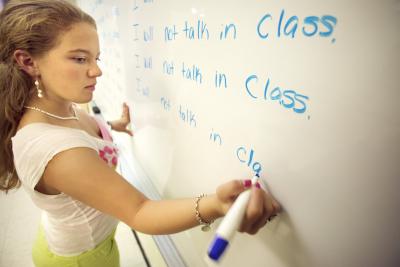While many students with behavioral problems are just as academically capable as their peers, their inability to control their actions can make it difficult for them to succeed in school. By educating themselves on ways in which they can help these struggling students, teachers can more effectively meet these pupils’ needs and decrease the likelihood that their behavioral challenges get in the way of their academic success.
“How to Reach and Teach Children with Challenging Behavior (K-8)”
This book by Kaye Otten and Jodie Tuttle provides teachers with a step-by-step approach to dealing with behaviorally challenging students in elementary and middle school grades. Teachers can benefit from the use of an assortment of tools provided, including self-monitoring techniques, student specific plan development guidelines and classroom behavior guideline creation tips. The book is rich in reproducible resources, allowing teachers to simply copy out the parts they like best and put these book features to use in their classrooms.
“Working with Students with Emotional and Behavior Disorders”
This Terry L. Shepherd book provides teachers facing the challenge of educating students with behavioral disorders a clear explanation of how they can effectively tackle the challenges that lay before them. In the text, Shepard moves through the steps necessary to deal with behavioral disabilities, including referral, diagnoses and accommodation, making suggestions as she moves through each stage. One of the most useful features of this text is the sizable list of accommodations that teachers can put to use to more effectively educate behavioral disorder students that they may encounter.
“Individualized Supports for Students with Problem Behaviors”
The book, which was co-written by Linda M. Bambara PhD and Lee Kern PhD, deals predominantly with the creation of behavioral support plans, a legal requirement for teachers educating pupils who have been diagnosed with a behavioral disability. This text contains examples of proper behavioral support plans, as well as an explanation of the way in which an educator goes about composing a plan of this type. Authors Bambara and Kern take a positive approach to modifying student behavior, explaining how teachers can promote good behavior with rewards to prevent having to punish misbehaviors, thereby more effectively teaching students who struggle with behavior how to act within the norms of society.
“Preventing Problem Behaviors: Schoolwide Programs and Classroom Practices”
This useful text, written by By Robert F. Algozzine, Ann P. Daunic and Stephen W. Smith, looks at behavior modification from a systemic level. While the book does contain some information as to what teachers can do to help students individually, it predominantly focuses upon how teachers can promote positive behavior in all students through the establishment of school-wide initiatives. Authors Algozzine, Daunic and Smith provide an assortment of options from which teachers and administrators can select, giving them the opportunity to pick the perfect program for the schools in which they teach.





